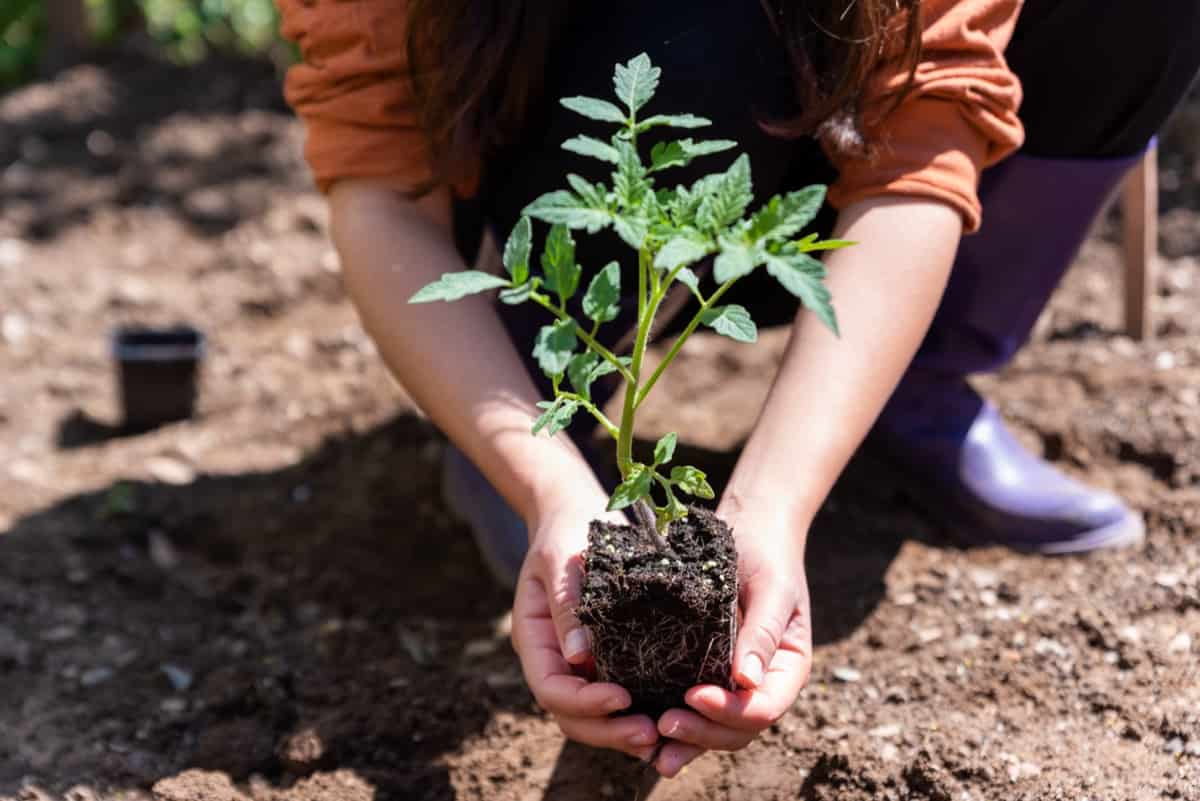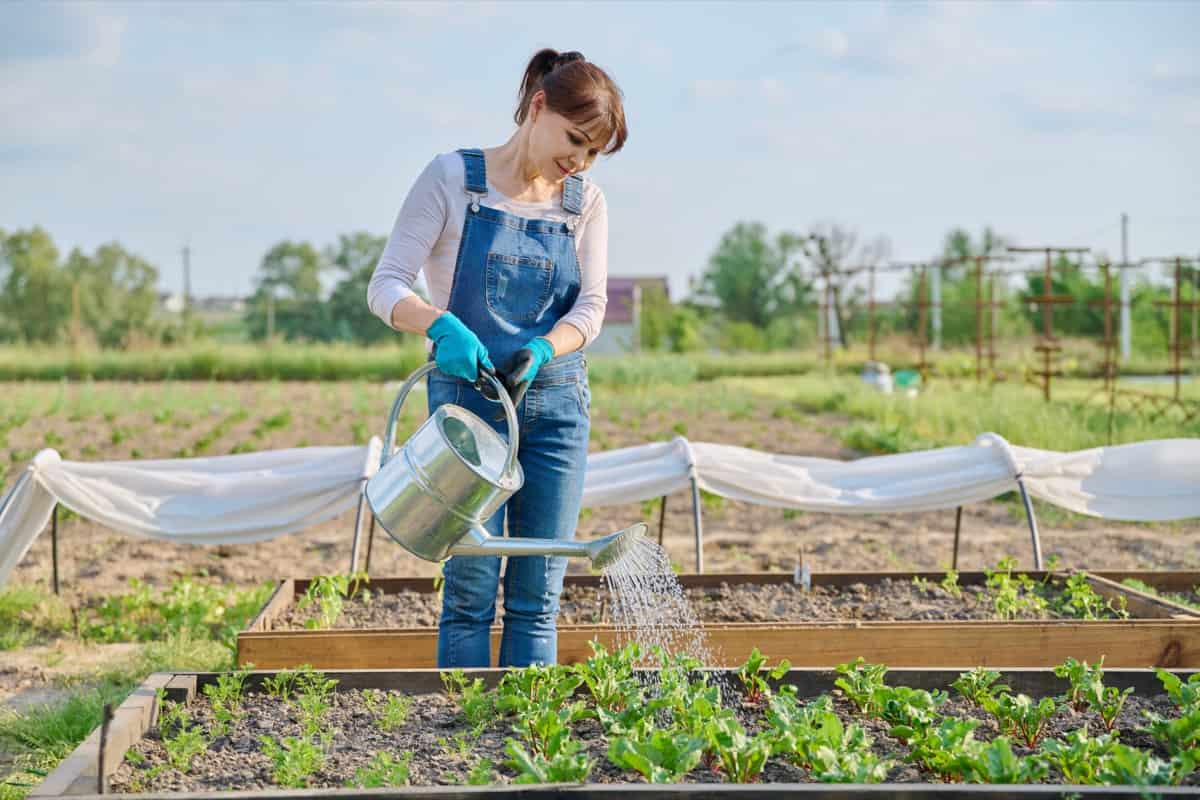When you wonder, “When should I start a vegetable garden in Oregon?” or “When should you plant a garden in Oregon?” you’re not alone. Oregon’s unique climate offers an excellent environment for gardening, but it can be a tad tricky to navigate. The Oregon gardening calendar and the Oregon vegetable planting calendar are crucial tools for any gardener in the state, ensuring that plants thrive in their respective zones.

The calendar will provide guidance depending on where you are and what month it is—say, what to plant in May in Oregon. Oregon’s growing season varies with diverse regions, so understanding when and what to plant is essential.
When to Plant Vegetables in Oregon
Understanding Oregon’s Climate Zones
Oregon’s climate is as diverse as its landscapes. The western part of the state, encompassed by the Pacific Ocean and the Coastal Range, enjoys a maritime climate. Here, winters are wet and mild, and summers are cool. In contrast, Eastern Oregon is influenced by a continental climate characterized by drier conditions, colder winters, and hotter summers. Understanding these differences is vital when considering how long the growing season in Oregon lasts in various areas.
Factors Affecting Vegetable Planting Dates in Oregon
Numerous elements come into play when determining the best times to plant. Soil temperature, for one, has a significant influence. Some vegetables require warmer soil, while others prefer it cooler. Daylight hours also impact plant growth; longer days can boost certain plant growth, whereas shorter days might slow it down. Lastly, unexpected frost events can seriously harm budding plants, so keeping an eye on local weather forecasts is essential.
Planting Vegetables in Western Oregon
With its mild maritime climate, Western Oregon offers a longer growing window for many vegetables. Early spring is an opportune time to plant cool-season veggies like spinach, lettuce, and peas. As the season progresses and soil temperatures rise, crops like tomatoes, cucumbers, and beans can be introduced. Late summer and early fall are ideal times to plant winter vegetables like kale and broccoli.
In case you missed it: Best Oregon Container Plants: For Vegetables, Flowers, Herbs in Winter, Shade, Full Sun

Optimal Vegetable Planting Times for Eastern Oregon
Eastern Oregon’s hotter and drier conditions bring about a different planting schedule. Late spring is the best time for crops like tomatoes, peppers, and corn. But for cabbage, turnips, and radishes, it’s better to plant them in early spring or late summer to avoid really hot weather. It’s essential to provide adequate water, especially during the hotter months, to ensure healthy growth in this region.
Vegetable Planting Schedule for Oregon
- While a universal planting schedule for Oregon doesn’t exist due to its climate diversity, a general guide can be helpful:
- Early Spring (February to April): Plant cool-season crops like radishes, lettuce, and spinach.
- Late Spring to Early Summer (May to June): As soil temperatures increase, it’s time for beans, cucumbers, and tomatoes.
- Late Summer to Early Fall (July to September): Kale, broccoli, and Brussels sprouts thrive in these months.
Recommended Vegetables for Early Spring Planting in Oregon
- Root Vegetables: Carrots, radishes, and beets prefer the coolness of early spring.
- Leafy Greens: Spinach, lettuce, and chard will thrive when planted early.
- Pods and Legumes: Peas are a classic early spring vegetable, perfect for Oregon’s climate.
Late Spring and Early Summer Vegetable Planting Guide for Oregon
- Fruit-bearing Vegetables: Tomatoes, peppers, and zucchinis should be planted during this period.
- Vine Vegetables: Cucumbers, melons, and pumpkins thrive on the warmer days.
- Additional Greens: Collard greens, turnip greens, and mustard greens can still be planted in this phase, provided they receive ample water.
Fall Vegetable Planting Tips for Western Oregon
Western Oregon, with its maritime climate, experiences mild and wet autumns. Planting cool-season vegetables during the fall is a great idea because they do well in this weather. Start by preparing your garden beds, ensuring the soil is well-drained to prevent waterlogging, which can harm the roots. It’s advisable to add compost or organic matter to enrich the soil. Vegetables such as broccoli, cauliflower, and Brussels sprouts are perfect for this season.
Additionally, leafy greens like kale, chard, and lettuce can be sown, providing fresh produce throughout the season. Root vegetables like radishes, turnips, and carrots can also be planted during this period. Ensure you provide these plants with adequate protection from heavy rainfall using gardening cloths or covers.
Ideal Fall Planting Dates for Eastern Oregon
Influenced by its continental climate, Eastern Oregon has colder and drier conditions than the west. Therefore, when considering fall planting, the timeline tends to be a bit earlier to ensure the crops establish themselves before the first hard frost. Late August to early September is ideal for sowing cool-season crops in this region.
In case you missed it: When to Prune Fruit Trees in Oregon: Best Time to Trim, Key Strategies to Cut Back

Vegetables such as spinach, peas, and radishes suit this climate, ensuring a harvest before the deep winter. Additionally, crops like garlic can be planted in the fall to harvest the following summer. Proper mulching is essential in Eastern Oregon to maintain soil moisture and provide insulation against sudden temperature drops.
When to Plant and What Vegetables to Grow in Oregon in Winter
While winter in Oregon might seem like a dormant period for gardening, it provides opportunities for certain hardy vegetables. Western and Eastern Oregon can extend the growing season by using cold frames, greenhouses, or hoop houses. Planting in late fall or early winter, particularly in regions with milder winters, allows for a harvest of fresh greens during the colder months.
Vegetables like kale, collards, and winter lettuces are ideal candidates. You can plant onions and garlic in the fall, and they’ll be ready to harvest in late spring or early summer. Though these vegetables can withstand the cold, it’s always a good idea to have protective measures like mulch to keep the soil from freezing, ensuring steady growth.
Vegetable Planting Schedule/Calendar Table for Oregon
| Month | Western Oregon | Eastern Oregon |
| January | Garlic (overwintered), Onions (overwintered) | Garlic (overwintered), Onions (overwintered) |
| February | Peas, Spinach | Start seeds indoors for spring planting |
| March | Broccoli (seed indoors), Lettuce, Radishes | Peas, Spinach |
| April | Carrots | Broccoli (transplant), Lettuce (transplant) |
| May | Tomatoes (transplant), Peppers (transplant), Cucumbers | Carrots, Kale, Potatoes |
| June | Beans, Zucchini | Tomatoes (transplant), Peppers (transplant) |
| July | Fall brassicas (start indoors), Winter squash | Cucumbers, Beans |
| August | Broccoli (transplant for fall), Lettuce (for fall harvest) | Fall brassicas (transplant) |
| September | Spinach (for fall/winter harvest), Radishes (for fall harvest) | Spinach (for overwintering), Lettuce (for overwintering) |
| October | Garlic (for next year), Onions (for overwintering) | Garlic (for next year), Onions (for overwintering) |
| November | Protect overwintering crops | Protect overwintering crops |
| December | Plan for next year and protect winter crops | Plan for next year and protect winter crops |
In case you missed it: How to Grow and Care for Organic Oregano: Guide for Planting to Harvesting

Conclusion
Oregon’s diverse climate, stretching from the wetter maritime west to the drier continental east, offers gardeners a unique opportunity to grow various vegetables year-round. One can reap a bountiful harvest by understanding the distinct characteristics of each season and the specific needs of the vegetables. Whether it’s the deep greens of winter or the robust vegetables of fall, Oregon’s soil and climate provide an enriching environment for all gardening enthusiasts.
- Ultimate Guide to Ossabaw Island Hog: Breeding, Raising, Diet, and Care
- Ultimate Guide to Juliana Pig: Raising Facts, Size, Diet, Care, and Lifespan
- Raising Lleyn Sheep: Disadvantages, Price, Uses, Characteristics, and Care
- Ultimate Guide to Meishan Pig: Breed Facts, Breeding, Raising, and Care
- Ultimate Guide to Teacup Pigs: Raising, Diet, Lifespan, Cost, and Care
- Guide to Raising Poll Dorset Sheep: Facts, Profile, Characteristics, Uses, and Care
- Ultimate Guide to Bighorn Sheep: Characteristics, Diet, Lifespan, Breeding, and Lifecycle
- Ultimate Guide to Raising Katahdin Sheep: Farming Facts, Breed Profile, Uses, and Care
- Ultimate Guide to Raising Oreo Cows: Belted Galloways Farming Facts, Profile, Uses, and Care